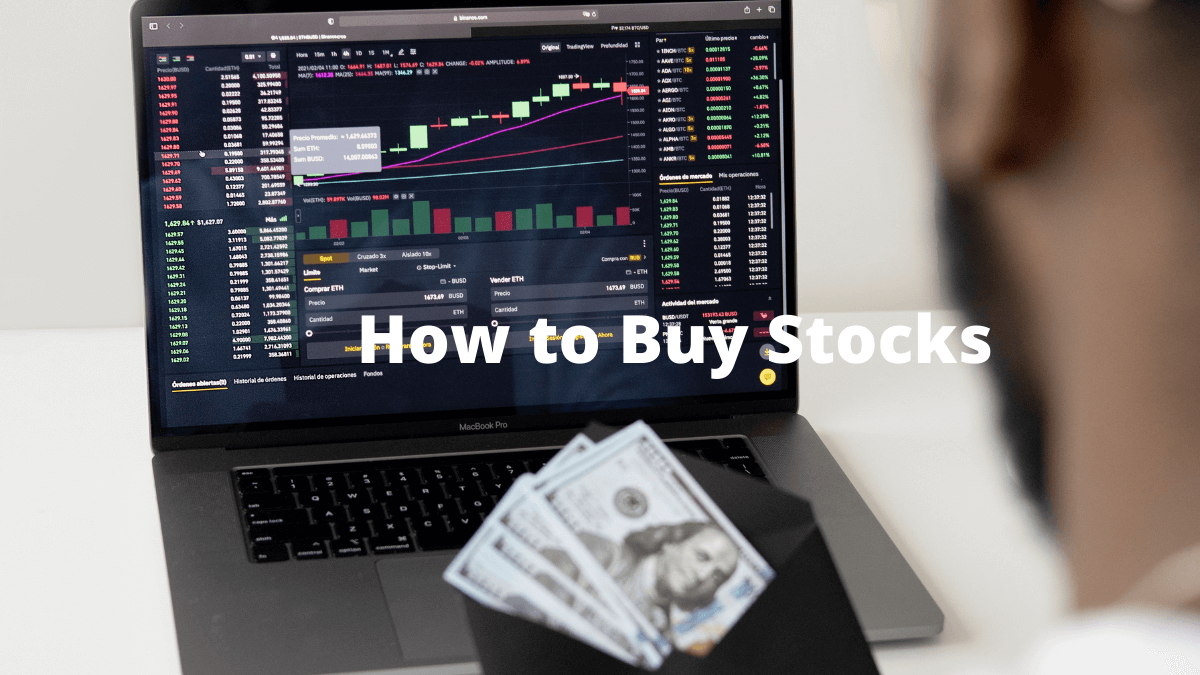This article provides information and education for investors. Corehint.com does not offer advisory or brokerage services, nor does it recommend or advise investors to buy or sell particular shares or securities.
To buy stocks, you will first need to have a brokerage account, which you can set up in 15 minutes. Then, when you have added money to the account, you can follow the steps given below, choosing to search and investing in different companies.
This may seem confusing at first, but buying stock is actually quite obvious. Here are five steps you are going to buy your first stock:
1. Select an online stockbroker
To buy the easiest way to share is through an online stock broker. After opening and funds in your account, you can buy shares through the website of the broker in a matter of minutes. Other options include buying shares directly using a full-service broker or company.
An online brokerage account is as easy as setting up a bank account to open: you provide account application evidence of full recognition and choose whether you’d like to fund the account by transferring a Czech or electronic mailing funds.
READ ALSO- Investing in Dividend Stocks
2. Research the stocks you want to buy
Once you have established and funded your brokerage account, it is time to dive into the business of buy Blue Chip stocks picking. A good place to start is researching companies you already know from your experiences as a consumer.
The deluge of data and real-time market gyrations overwhelms you as you conduct your research. Keep the objective simple: You are looking for companies of which you want to become a part-owner.
Warren Buffett famously said, “Buy stocks as a company if you want to own it, not because you want the stock to go up.” He has done very well for himself by following the rules.
Once you have identified these companies, it is time to do a little research. Start with the annual letter of the shareholders of management in particular – the company’s annual report. The letter will give you a general narrative of what is happening with the business and provide references for the number in the report.
After that, the information and the analytical tools that you evaluate such trade SEC filings, conference call transcripts, quarterly earnings update and recently needed information as will be available on your broker’s website, . Most online brokers also offer tutorials on how to use the basic seminars to bring their instruments and how shares.
3. Decide how many shares to buy
You should feel absolutely no pressure to buy a certain number of shares all at once with one share or to fill your entire portfolio. Just by buying a single stock for what it’s like to own individual stocks and by what you patience to get a feel for riding through a rough patch with minimal sleep loss – really small – Consider starting small. You can master shareholder swagger as you add to your position over time.
New stock investors may also want to consider fractional shares, a relatively new offering from online brokers that allows you to buy one share of one share instead of the entire stake. With a very small investment – companies like Google and Amazon that are known for their four figure share prices – that means you can get in pricey shares. Sophie Active Investments, Robinhood and Charles Schwab are among the fractional shares offered by brokers. (Sophie is an active investment and Robinhood NerdWallet advertising partner.)
Many brokerage changes a tool that dollar amount for the shares, are also provided. Say, $ 500 – – and like so many shares that amount to address the purchase, you have a fixed amount which may be useful if you want to invest.
4. Choose your stocks order type
Not be locked by all the numbers and nonsensical word combinations that your broker’s online order page. Basic stock-trading words refer to a cheat sheet:
| Term | Term |
|---|---|
| Ask | For buyers: The price that sellers are willing to accept for the stock. |
| Bid | For sellers: The price that buyers are willing to pay for the stock. |
| Spread | The difference between the highest bid price and the lowest ask price. |
| Market order | A request to buy or sell a stock ASAP at the best available price. |
| Limit order | A request to buy or sell a stock only at a specific price or better. |
| Stop (or stop-loss) order | Once a stock reaches a certain price, the “stop price” or “stop level,” a market order is executed and the entire order is filled at the prevailing price. |
| Stop-limit order | When the stop price is reached, the trade turns into a limit order and is filled up to the point where specified price limits can be met. |
Read Also- The Investing in Technology Stocks
5. Optimize your stock portfolio
We expect our first share purchase to mark the beginning of a lifelong journey of successful investment. But if things make it difficult, remember that every investor – even Warren Buffett – goes through a rough patch. The important things to come out ahead, in the long run, is to keep your perspective and focus on what you can control. Market gyrations are not among them. But there are some things under your control.
Once you are familiar with the share purchase process, take the time to dig into other areas of the investment world. How will mutual funds play an important role in their investment story? In addition to a brokerage account, have you set up a retirement account, such as an IRA? One is a great first step to opening a brokerage account and buying shares, but this is really just the beginning of your investment journey.
FAQ-
Ans- Technically, there is no minimum amount of money needed to start investing in stocks. $ 1000 to the beginning of the right – but you probably need at least $ 200. Most have a minimum to get the brokerage stocks open an account and buying started.
Ans- When you are the owner to buy a share of a stock, you have a percentage of automatically firm, and an ownership stake in the property. You have to pay $ 100 for a share of stock, and the duration of the stock you appreciate says, during his master, 10% value, then you win $ 10 on their stock investments.
Ans- You recommend buying your costs can keep low, some experts right from 12 to 18 stocks bring out the diversity of the risk of owning individual stocks portfolio. The total stock value of your diversification should not be based on market share.
Ans- With the benefits you can sell your shares, you can also earn some parts of the proceeds of the dividend, or the company’s shareholders. Cash dividends are usually paid on a quarterly basis, but you can also get dividends in the form of additional shares of stock.








